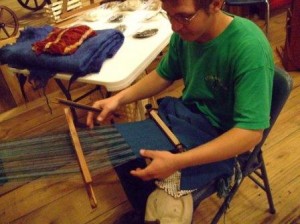 Fall is upon us with its cool air, fresh smell, and hues of red, brown, yellow, and orange. This the time of year when our minds drift to crunchy leaves, spooky decorations, and bright orange pumpkins. Pumpkins have become a Fall icon and choosing the perfect one for display or turning into a jack-o-lantern is important and can be difficult.
Fall is upon us with its cool air, fresh smell, and hues of red, brown, yellow, and orange. This the time of year when our minds drift to crunchy leaves, spooky decorations, and bright orange pumpkins. Pumpkins have become a Fall icon and choosing the perfect one for display or turning into a jack-o-lantern is important and can be difficult.
The size of your pumpkins will depend on what you want to carve on them. Pumpkins can range in size from very small to gigantic, depending on the variety. Those that are medium sized work best for most stencils that you would purchase or make. Very large pumpkins can be carved with elaborate designs and placed on your porch or around an entryway. Smaller pumpkins can be quickly carved with traditional faces and can be scattered around for parties, haunts, or to create a lighted pathway. Before choosing buying your pumpkins, you will need to decide what designs you will be carving. This will allow you to create a shopping list of the different shapes and sizes you’ll need. When carving without a stencil, the shape of the pumpkin can enhance or define the personality of the final jack-o-lantern. Select pumpkins that are ripe and have no bruises, cuts, or nicks. A ripe, or hollow-sounding, pumpkin will be easier to scoop out. Check your pumpkin to make sure that there are no soft spots and that it has at least one smooth, unblemished face for carving. Make sure that your pumpkin has no major discoloration because this could be a sign of early rotting. Try to choose a pumpkin that is as smooth as possible and free of scratches, dents, or gouges.
When carving without a stencil, the shape of the pumpkin can enhance or define the personality of the final jack-o-lantern. Select pumpkins that are ripe and have no bruises, cuts, or nicks. A ripe, or hollow-sounding, pumpkin will be easier to scoop out. Check your pumpkin to make sure that there are no soft spots and that it has at least one smooth, unblemished face for carving. Make sure that your pumpkin has no major discoloration because this could be a sign of early rotting. Try to choose a pumpkin that is as smooth as possible and free of scratches, dents, or gouges.
If using a stencil, select a pumpkin that is large enough and as close to the shape as your design. Remember to be flexible. A tall, skinny pumpkin may be more suited to your design than a round, fat one.
Choose a pumpkin with a stem. A strong, well-attached stem is a sign of a healthy pumpkin. Never carry your pumpkin by its stem because it may break. This would take away from the visual allure of the pumpkin plus losing the stem can accelerate the pumpkin’s rotting. Take care to, also, not bruise the pumpkin during transport or storage because this can shorten their life-span.
 If you find your perfect pumpkin but it happens to be missing its stem, you can still use it. Carve the bottom out of your pumpkin for the opening instead of your top. Set your light source on the cleaned bottom piece and set your pumpkin over it. This way you don’t need the stem as a handle.
If you find your perfect pumpkin but it happens to be missing its stem, you can still use it. Carve the bottom out of your pumpkin for the opening instead of your top. Set your light source on the cleaned bottom piece and set your pumpkin over it. This way you don’t need the stem as a handle.
Balance is very important in choosing your pumpkin. Your pumpkin needs to be able to stand up on its own without rolling over. A solid, flat bottom means less chance of your pumpkin rolling over and getting damaged.
Storage after purchase is also important. Store your pumpkin in a cool, dry place until you are ready to carve. Once pumpkins ripen, they will deteriorate quickly; heat and light speed up the process.
Once you pick the perfect pumpkin, your imagination is your only limit.
































And if you use a stencil… the secondary benefit is being able to eat the pumpkin! Can it, dry it, or make a pie.
[…] Â Email This Post Explore posts in the same categories: Homesteading […]